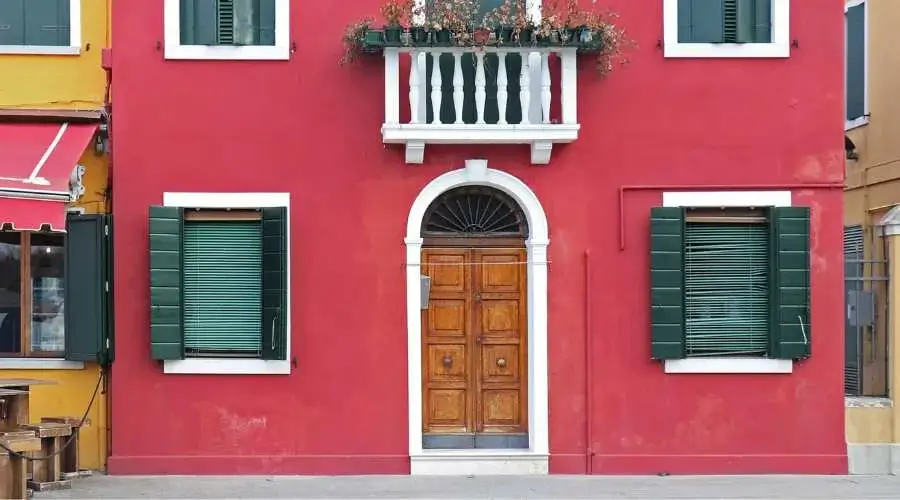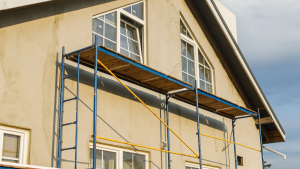So you have cracks and holes in your stucco and are asking how to fix stucco cracks and holes, right? If you’d want to learn how to repair anything stucco at home, this article might help.
Stucco is a building material that may be used on interior and exterior walls. It is fire resistant and creates a watertight barrier. While stucco is a relatively long-lasting material, it is not immune to wear and tear. Therefore any cracks or holes should be fixed as soon as feasible.
“Can I repair the stucco myself?” inquires the homeowner. Repairing cracks and holes in stucco is a simple task that most homeowners can do independently with suitable materials and equipment.
REPAIRING STUCCO TYPICALLY INVOLVES VARIOUS STEPS:
- Remove any loose or broken plaster using a chisel and hammer.
- Remove any dirt or garbage from the area.
- If the damage is minor, create a batch of stucco as directed by the manufacturer and trowel it over the damaged area.
- If the repair is more extensive, you may need to construct a form from wood or metal to hold the stucco in place while it cures.
- Smooth the stucco surface using a trowel or float.
- Allow the stucco to cure according to the manufacturer’s instructions. This generally takes many days.
- Paint or finish the stucco as desired when it has cured.
- Following the manufacturer’s instructions and utilizing the necessary tools and supplies is essential to ensure the repair is done correctly and lasts. If you are uncertain about your stucco repair skills, consider hiring a professional stucco repair near me.
If you want your stucco to survive outside, you must repair any damage regularly. Follow these steps to repair and seal stucco cracks and gaps.
THINGS YOU WILL NEED FOR EXTERIOR STUCCO REPAIR:
- Wire brush
- Hammer
- Chisel
- Gloves
- Safety glasses
- Trowel
- Sponge
- Stucco mix
Let’s get started with exterior stucco repair.
5 STEPS TO REPAIR STUCCO AT HOME
STEP 1: CLEAN THE AREA
Remove any crumbling stucco and clear any dust from cracks or holes in the stucco with a brush or shop vacuum before commencing the exterior stucco restoration procedure. Remove any loose stucco using a hammer or hammer and chisel.
Also, take care not to damage the lath underneath. Allow the stucco to dry completely before starting the repair. It is done to guarantee that the new system works properly coats are applied smoothly.
Wear protective eyewear throughout this time to avoid harm because particles from the broken plaster may enter your eyes. Consequently, it is highly urged that you get protection in advance.
STEP 2: PREPARE THE REPAIR AREA
To begin, prepare the region for a successful repair. When dealing with minor fractures, a putty knife may widen and shape the fracture into a V. This improves the adhesion of the repair material to the stucco.
Cut a square or rectangle form around larger holes using a circular or reciprocating saw. This produces a clean, straight edge to which the repair material may adhere.
STEP 3: MIXING THE REPAIR MATERIAL
For fixing stucco cracks and holes, you have numerous alternatives. The stucco patch is the most prevalent. Combine the powder and water as directed in the package directions. Larger repairs may require premixed stucco repair mortar or a conventional Portland cement, sand, and water combination.
STEP 4: APPLY THE REPAIR MATERIAL
Apply the repair material to the crack or hole using a putty knife or trowel. With a scoop, fill small fractures and level the surface. Use many layers of repair material for larger holes, allowing each layer to dry before applying the next. Follow the manufacturer’s recommended drying and curing times.
STEP 5: FINISH THE REPAIR
After the substance has fully dried and firmed, the repair is complete. Smooth the surface and integrate the repair substance with the surrounding plaster using a sanding block for tiny gaps. To match the surrounding wall, apply a layer of stucco finish over more significant gaps. To do so, prepare a batch of stucco finish per the package directions and apply it to the repair area using a trowel or a brush.
For drying and curing periods, follow the manufacturer’s recommendations. If it isn’t already, you’ll have to paint the repaired area to match the surrounding stucco. This helps the paint to cling to the plaster and produces a more uniform surface.
After the primer has cured, apply the paint using a brush. Or paint to apply a layer of exterior paint. If you’re not sure about the color,
of your stucco, bring a sample to the shop, and they will match it for you.
We are confident that this comprehensive resource solves questions like “How do I repair stucco?” “How do I repair stucco cracks and holes?” and “Can I repair stucco myself?” You may need help to repair the stucco independently since outdoor stucco restoration requires specialized knowledge.
Conclusion
Stucco is vulnerable to deterioration due to continual changes in weather, such as rain, snow, or intense sunlight. In the lack of adequate weatherproof protection, cracks may form fast. Cracks may cause more damage, costing you more money and generating other problems, and repairing and sealing stucco cracks and holes aids in the preservation of a home’s structure. Stucco upkeep might assist in boosting a home’s market value.


